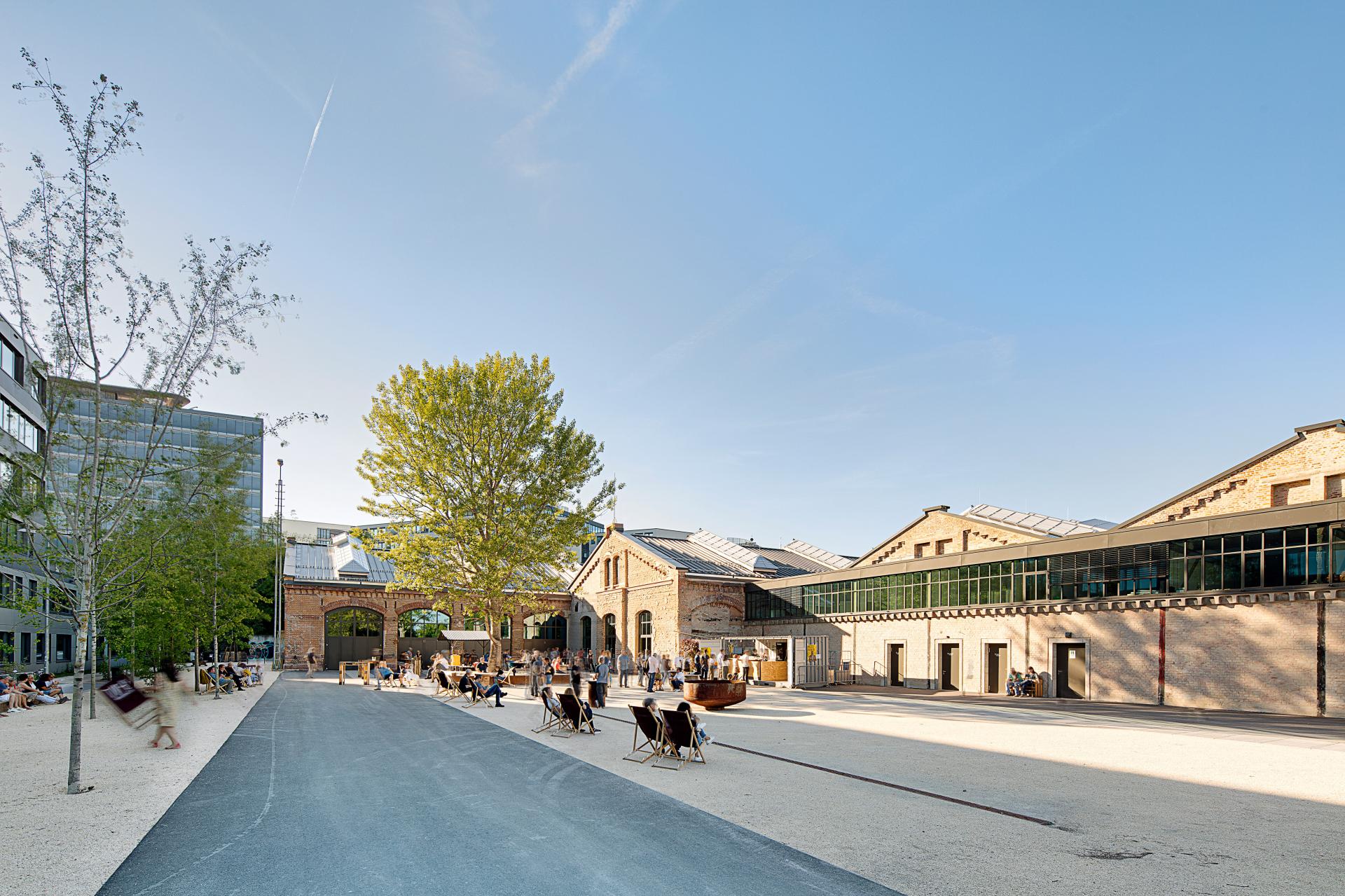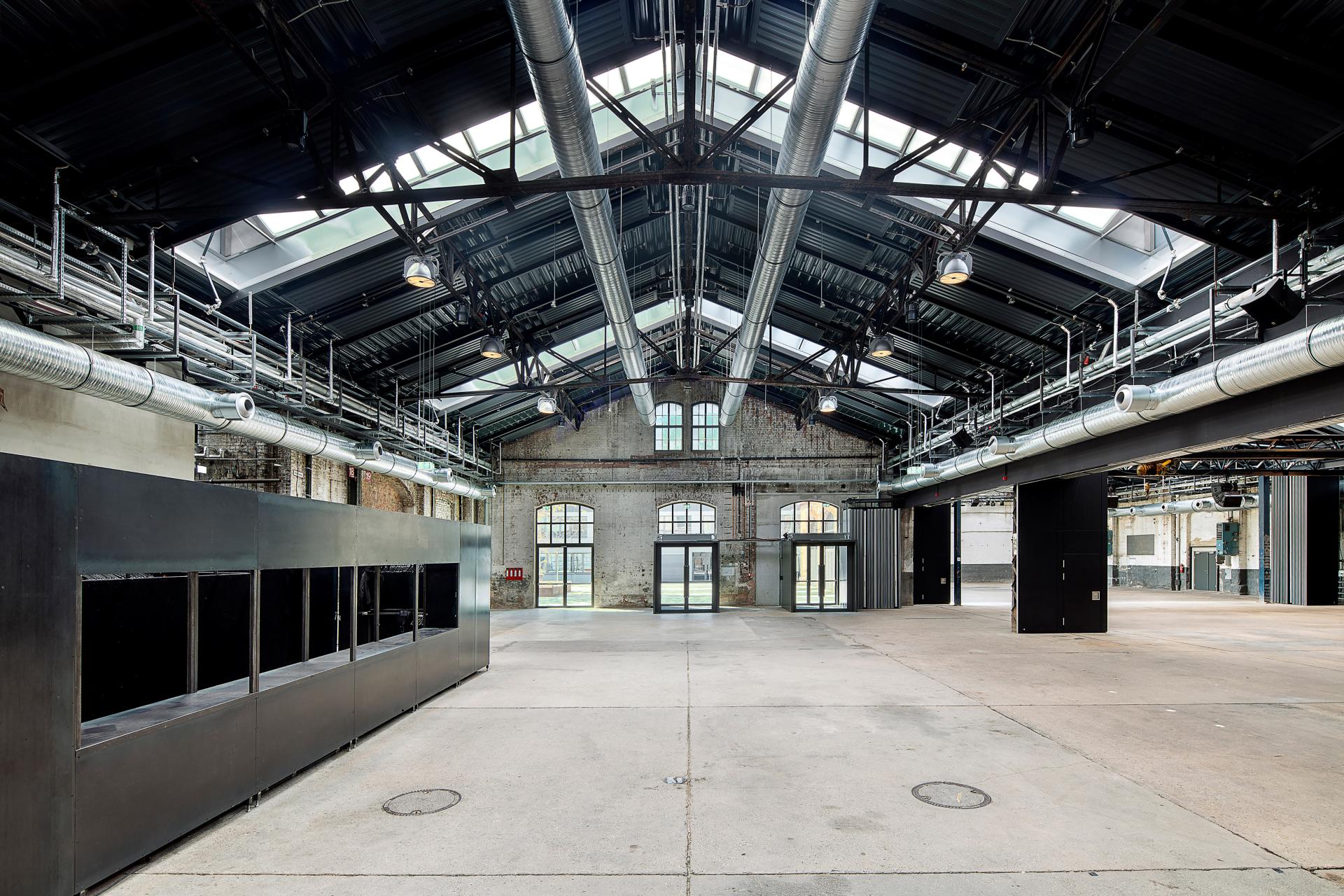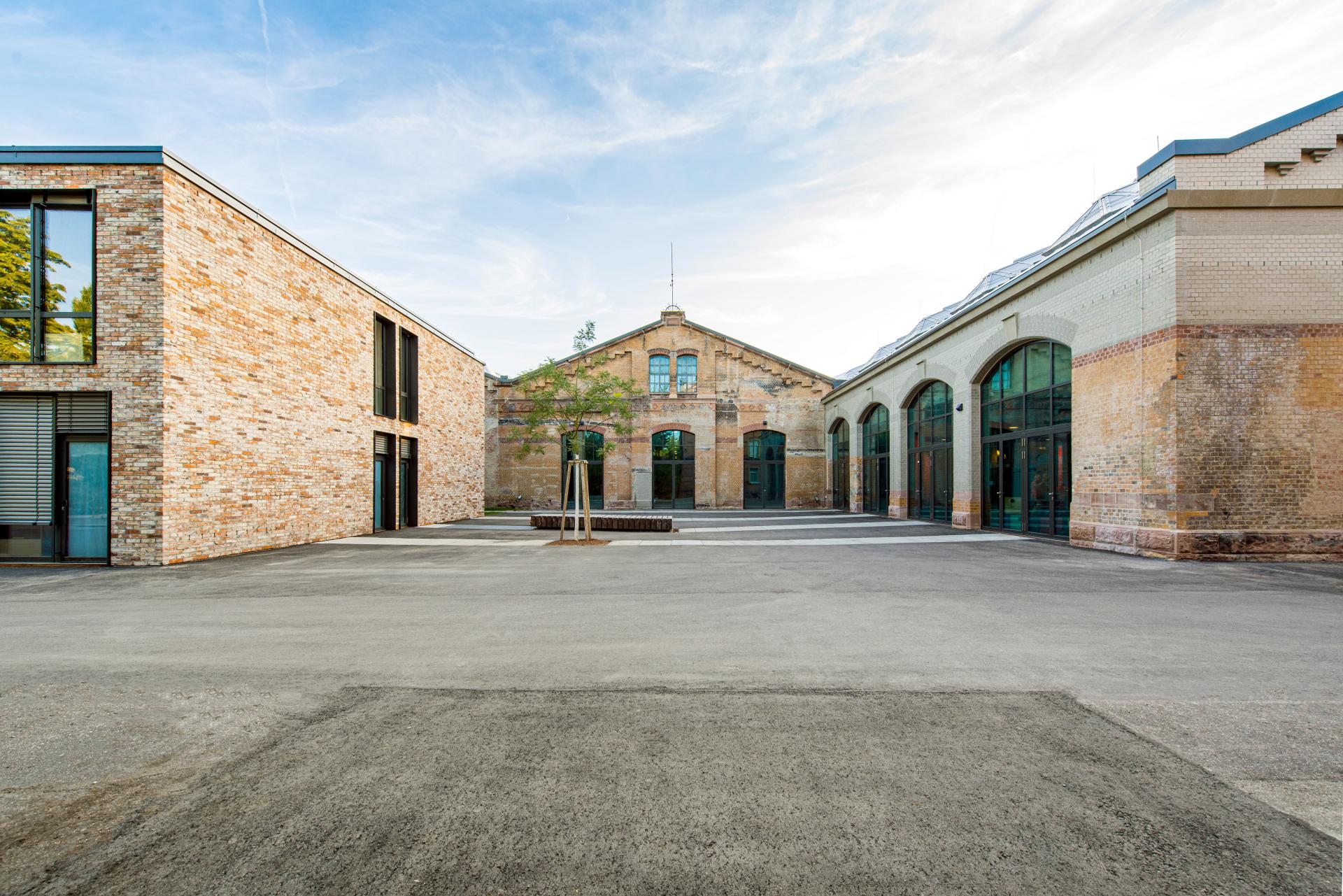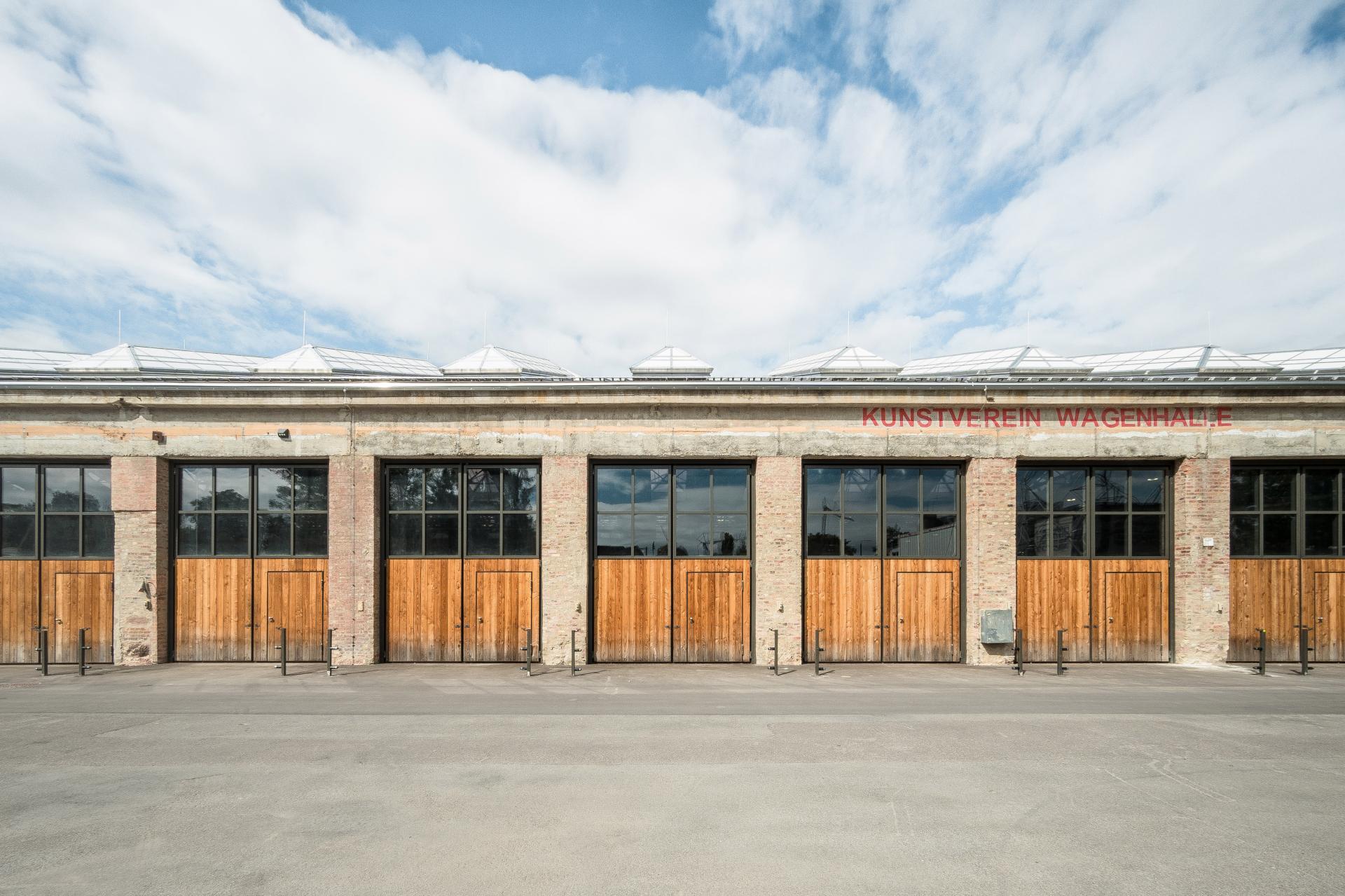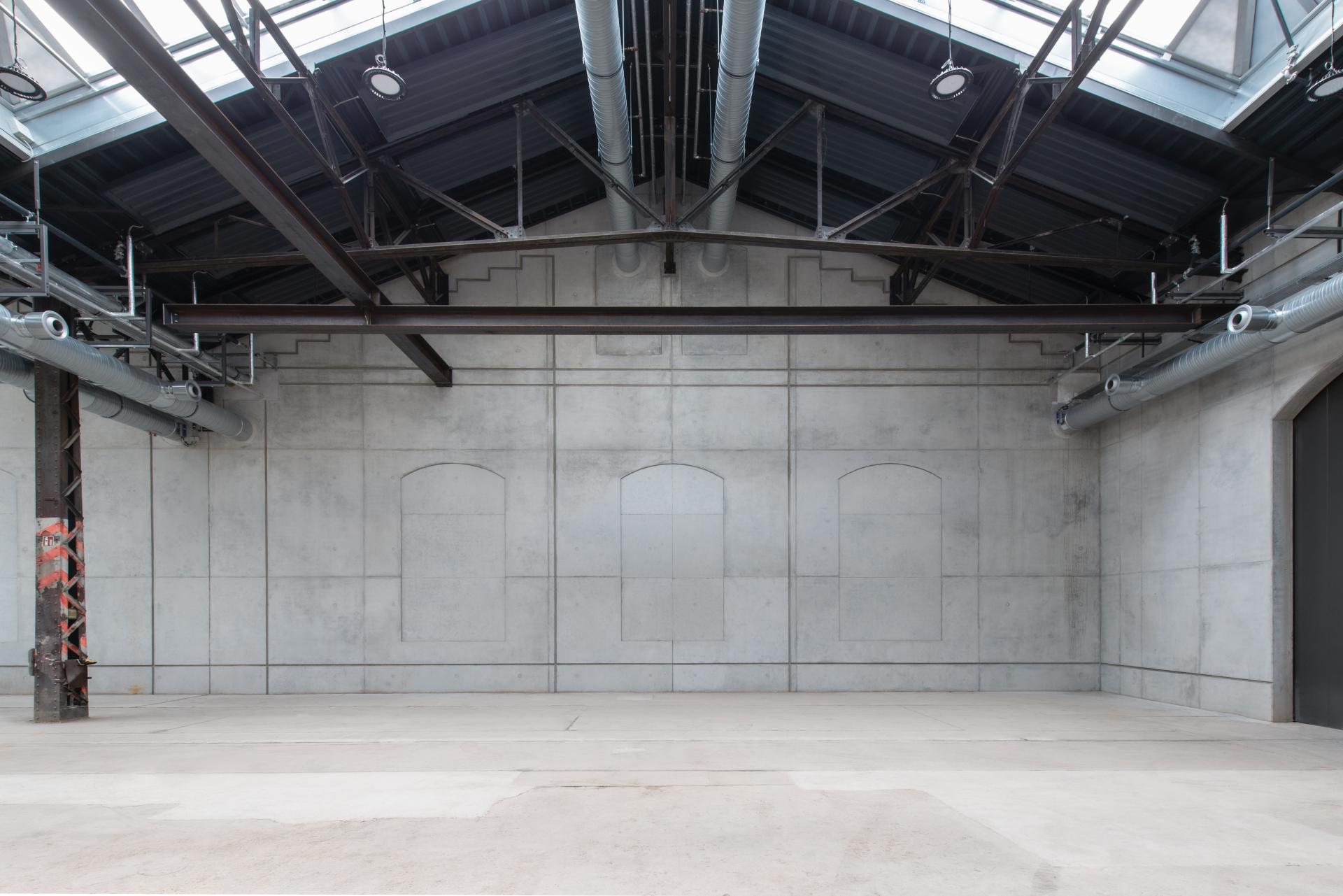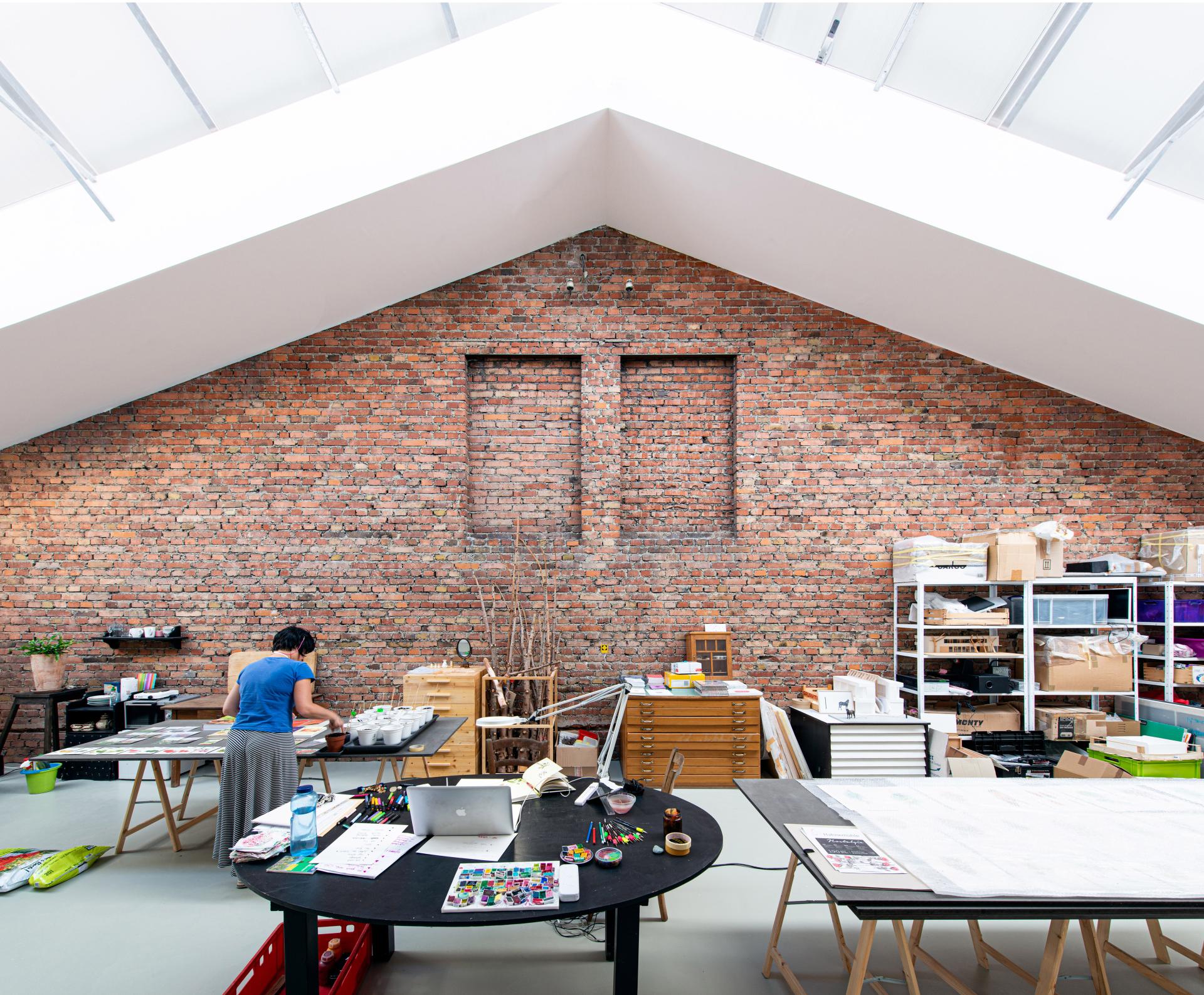Wagenhallen Stuttgart
Basic information
Project Title
Full project title
Category
Project Description
The Wagenhallen Stuttgart - a former locomotive shed from the 19thcentury - is characterised by various construction periods, conversions and war destruction. The four adjacent pitched roof halls have developed into a cultural focal point in Stuttgart even before their renovation and have since housed artist’s studios, an event area and a tango school. The former locomotive shed can be experienced again in its original design and function as a dynamic and lively building.
Project Region
EU Programme or fund
Which funds
Other Funds
Funded as part of the federal-state program "Innenentwicklung - Aktive Stadt- und Ortsteilzentren" with funds from the Federal Republic of Germany, the state of Baden Württemberg and the state capital Stuttgart.
Description of the project
Summary
The Wagenhallen Stuttgart were built in 1895 as a locomotive shed. They have been used for various purposes and converted several times over the course of their 120-year history. They were severely damaged during World War II. In 2003, artists occupied the then vacant building and saved it from demolition.
In the meantime, the Wagenhallen have become a focal point of Stuttgart's art and culture scene. After being renovated, the halls have become even more attractive as a venue for concerts and events. The original users, a cultural enterprise for up to 2100 guests, an art association with 100 members and a tango school, will move back into the halls after the renovation.
The design idea and spatial concept of the renovation are derived from the original use of the former locomotive shed: The original shape of the building was peeled out of the existing ensemble, the original substance of the halls was carefully restored and historical traces were uncovered. The living surfaces are preserved, different layers of time become readable and contrast with necessary structural additions resulting from new uses.
With the renovation, the building typology of the Lokomotiv-Remise is once again recognizable. The front with its large gates is located in the southeast. Two inviting, urban squares have been created on the two opposite front sides. On the east side, the square is framed by the northern wing of the hall, which has been raised to its original height, and by a new two-story building that respectfully distances itself from the historic structure. Both opposing squares serve as a new address for users and as outdoor space for the event areas.
Key objectives for sustainability
Upgrading of the 120-year-old building envelope to the standard of the current EnEV. This was achieved by replacement of the non-historic roof envelope, replacement of the non-historic gates, doors and windows as well as doubling of the historic windows.
Thus, almost 90% of the building envelope could be highly insulated. A district heating pipeline in the immediate vicinity of the carriage sheds had a positive effect on the energy concept. Thanks to this energy source, it was possible to make comparatively responsible use of energy resources despite the challenge of "building in the existing fabric".
This was achieved by reservation of the building fabric as far as possible and the use of old materials, such as the clinker facade of the new building.
Allowing a minimum temperature and maximum humidity in the halls no sandblasting of the coating of the steel structure was required. So, the old surfaces of the steel construction could be preserved.
Key objectives for aesthetics and quality
The Wagenhallen are to retain the character of the off-location and at the same time be upgraded in terms of licensing and functionality - i.e. fire protection, statics, spatial and structural acoustics, building physics, as well as in terms of the technical building development. The structure of the existing building will be worked with and harmonized with the new use:
The design idea and spatial concept of the renovation are derived from the original use of the former locomotive shed: The original shape of the building was peeled out of the existing ensemble, the original substance of the halls was carefully restored and historical traces were uncovered. The living surfaces are preserved, different layers of time become readable and contrast with necessary structural additions resulting from new uses.
By deconstructing the administration buildings from the 1930s, the facade of the Wagenhallen becomes visible again. The historic clinker bricks are revealed under the plaster of the adjoining building. The original cubature of the building was restored. Different shades of the clinker bricks mark the different layers of time: The existing building is characterized by red and ocher clinker bricks as well as red sandstone. For the reconstruction, these colors were desaturated and thus fit into the historic building as a new time layer.
The interior is characterized by steel columns and rhythmic skylights. The skylights were reconstructed according to the historical model and at the same time take the new use into account. With the help of three flexible partition walls, the area of the cultural center can be divided into up to four smaller rooms - the halls are thus designed for the most diverse types of events.
Key objectives for inclusion
The most important key objective was that the previous users would return after the refurbishment. Especially artists with low incomes should be given the opportunity to afford a studio at this special place next to the city center.
The new Wagenhallen Stuttgart is seen as a cultural conservation area, which functions as the nucleus of the new urban development area of the Rosenstein areal. The area of the artists' studios is accessible to the public, an open atmosphere was intended.
All public uses are accessible at ground level (including wheelchair and stroller access).
Results in relation to category
The building is characterized by various periods of construction, reconstruction and wartime destruction. The spatial concept of the refurbishment is derived from the original use of the former locomotive remise. The original form was peeled out of the existing ensemble, the original substance of the halls was carefully restored and historical traces were uncovered. The living surfaces are preserved, different layers of time become readable and contrast with necessary structural additions.
Inside, the spatial appearance of the halls, which are up to ten meters high, is characterized by steel supports and rhythmic reconstructed skylights. They take up the original structure of the halls.
Fire protection walls separate the spacious cold room, which is used by the artists, from the event areas. The event area with a gross floor area (GFA) of a good 4000 square meters is designed for up to 2100 guests. Three flexible partition walls allow the division into up to four smaller rooms - depending on the event format.
The artists' project room is located in the east of the halls. It is, so to speak, the artists' "showcase" and is used multifunctionally for exhibitions, events and performances. The firewall between the cold hall and the project room refers in its location and design to the former outer wall of the halls, which existed here until the 1930s. The structure of the historic wall was translated into a simplified form.
The artists' studio spaces are inserted into the cold hall as set cubes. The room-in-room system preserves the authentic impression of the space. As a reminiscence of the former locomotive shed and its locomotives, the concept envisages that parts of the cubes can be pushed outwards, for example for events or outdoor work. An artist has implemented this idea with an old railroad carriage. In this way, the former as well as the current use of the wagon halls is already visible in the exterior space.
How Citizens benefit
Following the original use, the halls served as a repair store for buses and as a warehouse and were converted several times in this context. Since 2003, cultural uses have been established, which saved the building complex from demolition. The city recognized the value of the site and decided to convert it into a cultural center. The basic concept was agreed upon in close and intensive exchange with the client and users. There was a close user coordination throughout all phases of the project. The involvement of the public with over 40 guided tours for citizens, universities, schools, chambers, municipalities, etc. was very well received.
Existing users were successfully retained through intensive user participation throughout the planning process, as cultural uses are seen as a quality for the city. Result: customized building planning.
After retrofitting, the Wagenhallen once again established itself as a much sought-after attraction for Stuttgart's art and culture scene, but now with significantly more possibilities. The original users - an events company, an art association with around 100 artist members, and a tango school - returned to the halls after the renovation and were not displaced by high rents and other uses, as is often the sad truth with such projects. The approach of the political decision-makers is prototypical - a stroke of luck for the users and cultural life in Stuttgart and the region.
The Wagenhallen are now seen as a place of art and are now anchored in the city of Stuttgart as a protected cultural space. Especially due to highly flexible use possible in the event area and in the artist area. The whole building complex is the nucleus of the new urban development area of the Rosenstein areal.
Innovative character
The building was erected on a railroad site and in its previous history had not received approval from the building regulations office of the city of Stuttgart. In the course of the conversion and renovation of the Wagenhallen, the building complex was submitted to the City of Stuttgart for a building permit for the first time in its history. This posed special challenges to the planning of bringing a 120-year-old building up to the current ENEV standards - among other things, with regard to the proof of thermal insulation and the proof of stability: this problem comes to bear particularly on the hall roof, which was subject to complex requirements in terms of sound insulation, room acoustics, statics, fire protection and building services supply; these sometimes contradictory objectives - sound insulation requires mass, the filigree supporting structure is subject to static stress - were nevertheless able to be implemented through the choice of materials, an intelligent layered structure of the roof and skylights, and the arrangement of suspended loads. The central structural measure is the complete replacement of the non-historic roof covering with lighter materials.
Due to the different building code classifications (event areas and workshops or places of assembly and industrial building code), there are different fire protection requirements. Separation between these areas by fire-resistant partition walls. The new building is separated from the other parts of the building by an outdoor area with a distance of more than five meters.

